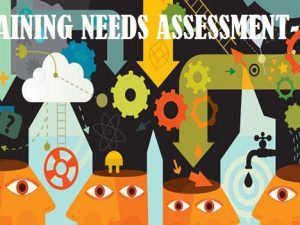| Table of Contents |
1.0 Introduction
1.1 Analyze the strategic direction of the organization
1.1.1 Introduction to the company
1.1.2 Strategy of ASDA
1.2 Evaluate the strategic skills required of the leader to achieve strategic ambitions
1.2.1 A Clear sense of purpose
1.2.2 Strong values and personal integrity
1.2.3 Commitment to developing others through coaching and mentoring
1.2.4 Champion of diversity
1.2.5 Ability to engage and communicate across all levels
1.2.6 Agile and innovation, technological curiosity and savvy
1.2. 7 Emotional intelligence
1.3 Assess the relationship between existing, required and future skills to achieve the strategic ambitions
1.3.1 Personal Development Cycle
1.3.2 Personal Analysis
References
|
| Preview |
1.0 Introduction
Over the past decade, strategic leadership has become very significant to the growth and success of an organization in the rapidly changing business environment. Today's businesses need practiced leaders who understand the complexities of the vital strategic skills that leaders need to have to achieve strategic ambitions of their organizations. This portfolio focuses on leadership skills required in the 21st century and discusses the impact in the broader organization community. To conduct this analysis, I have selected ASDA Group Ltd.
This report proceeds as follows. The first section of this portfolio (section 1.1) analysis the strategic direction of the ASDA. The company's strategic directions focus on attracting more customers by providing quality products and service for low prices, looking after their employees, maximizing wealth for their shareholders and building stronger communities.
Once the strategy has been explained, next section (section 1.2) evaluates the strategic skills required of the leader to achieve strategic ambitions of the business. Those are a clear sense of purpose, values and personal integrity, developing the team through coaching and mentoring, diversity, excellent communication skills, agile and innovation, technological curiosity and emotional intelligence.
Final section (session1.3) assesses the relationship between existing, required and future skills to achieve the strategic ambitions. In this unit, I have described personal analysis and gaps that I need to further develop through the personal development plan.
1.1 Analyze the strategic direction of the organization
1.1.1 Introduction to the company
ASDA is the second largest grocery retailer in Britain. This supermarket chain has more than 160,000 employees over 525 stores across the UK. ASDA focuses on improving their core business by strengthening their store proposition, developing trusted online offers and developing low cost operating model. The key strategies are helping their customers to save money and improving new ways of an offer in-store and online to live a quality lifestyle (ASDA Group Ltd, 2016).
1.1.2 Strategy of ASDA
The success of every business depends on how well the company can implement the best business strategy to satisfy the expectation of their stakeholders compared to their competitors. Mintzberg (2007, p.3) states that strategy is "a pattern in a stream of decisions”. Johnson & Whittington (2017, p.4) explain that strategy as "the long-term direction of the organisation". Based on these definitions we can relate strategy as a long-term plan and decision of the business.
By using low-cost operation model, ASDA is generating cost-saving methods which enable them to invest more in price, quality and services to customers. As they are using low-cost operational model business strategy, I believe in the long term they have a high possibility of increasing their business share in the market. As a consequence of a good strategy, ASDA is effectively using their resources to meet the market need and fulfil the expectation of their stakeholders (ASDA Group Ltd, 2016).
According to my analysis, ASDA is using a collaborative approach to set up the business strategy framework which focuses on benefiting customers, employees, communities and shareholders. The strategy is positioned on their mission, purpose and beliefs, which guide them to satisfy the expectation of their stakeholders even better (ASDA Group Ltd, 2013).
The company's strategic directions focus on attracting more valued customer based continually by providing high-quality products and service for low prices, looking after their employees, maximising wealth for their shareholders and become the most trusted retailer with using modern technology to deliver efficient service. This strategic direction will help to achieve their mission of building the long-term trusted relationship with their customers by providing excellent customer service.
There are many different approaches to strategies. The Ansoff approach (Kipping & Cailluet, 2010) to strategy mainly works from the top-down, which plans their strategy in advance and then operates according to the initial planning to get the projected outcome which they have already set up. However, this theory was based on some assumption such as environment and technology will not change, no innovation and strategic planning team are sufficiently able to implement the strategy without any issue. In this approach, top management has formulated the strategy, and then operational managers and employees implement it. However, there are no involvements of operational level managers and employees contribute to developing these plans. Due to these limitations of the deliberate strategy for designing the mission, objectives and goals in the rapidly changing current business environment, it is not an efficient approach (Kipping & Cailluet, 2010).
|





